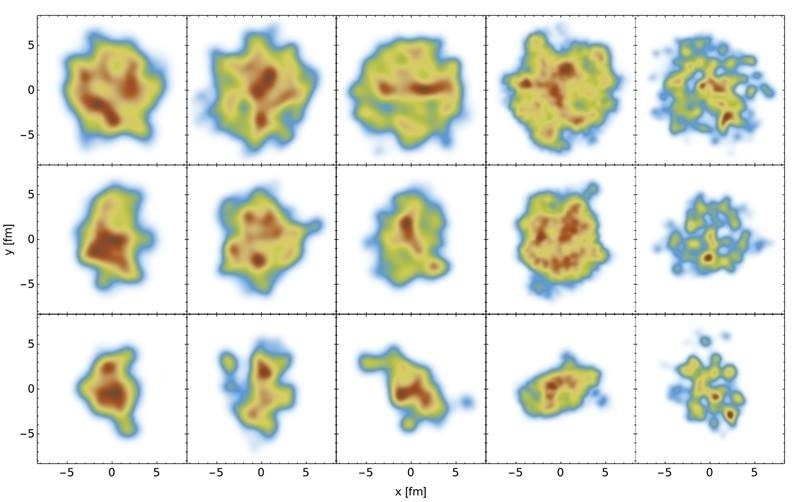The Large Hadron Collider (LHC) collides with heavy ions—atomic nuclei that have been stripped of their surrounding electrons—to investigate atomic nuclei and subatomic particles. The quarks and gluons that normally make up nucleons (protons and neutrons) melt into a new state of matter known as quark-gluon plasma (QGP) after these collisions.

The initial state energy density distribution in the transverse plane for various choices of the model parameters. Image Credit: Wilke van der Schee
Theorists use an advanced model and a substantial quantity of experimental data to determine the characteristics of this QGP. The number of nucleons in each of the two colliding lead nuclei, one of the model’s parameters, is measured.
However, nucleons must be smaller than originally estimated by scientists based on earlier assessments to agree with the reaction rate.
The Impact
The nucleon size discovered by low-energy tests is around 0.5 femtometers (fm), or 5×10–16 m. Compared to these low-energy investigations, heavy ion collisions offer a radically different viewpoint on nucleon size.
The nucleon size of heavy ions had previously been reported to be substantially greater, at roughly 1 fm. The newly discovered analysis for the first time takes into account the response rate of lead-lead collisions as determined by the experiment.
The density of atomic nuclei in the beam and the size of the nuclei both affect the reaction rate, which is the frequency with which atomic nuclei react with one another. The optimal size is around 0.6 fm after accounting for this response rate, clearing up the discrepancy.
Summary
Scientists can determine the collision rate for a given beam density by looking at the overall hadronic cross-section of lead-lead collisions. A cross-section is a suitable option for comparison to experiments in a global analysis since it is extremely simple to calculate in a theoretical model. The experimental measurement is more challenging to carry out, though. Therefore, there were significant scientific reservations about this quantity until the year 2021.
These reservations were significantly reduced in 2022 by a new measurement from the Large Hadron Collider’s ALICE experiment, enabling its inclusion in a comprehensive study. Researchers from the Massachusetts Institute of Technology and CERN conducted this investigation, which compares a theoretical estimate with more than 600 distinct experimental data points.
The research revealed that nucleon sizes of about 1 fm are favored when the cross-section measurement is excluded. However, this desired value falls to about 0.6 fm when the cross-section is taken into account.
The Department of Energy’s Office of Nuclear Physics provided funding to Govert Nijs.
Journal Reference
Nijs, G., et al. (2023) Hadronic Nucleus-Nucleus Cross Section and the Nucleon Size. Physical Review Letters. doi:10.1103/PhysRevLett.129.232301.